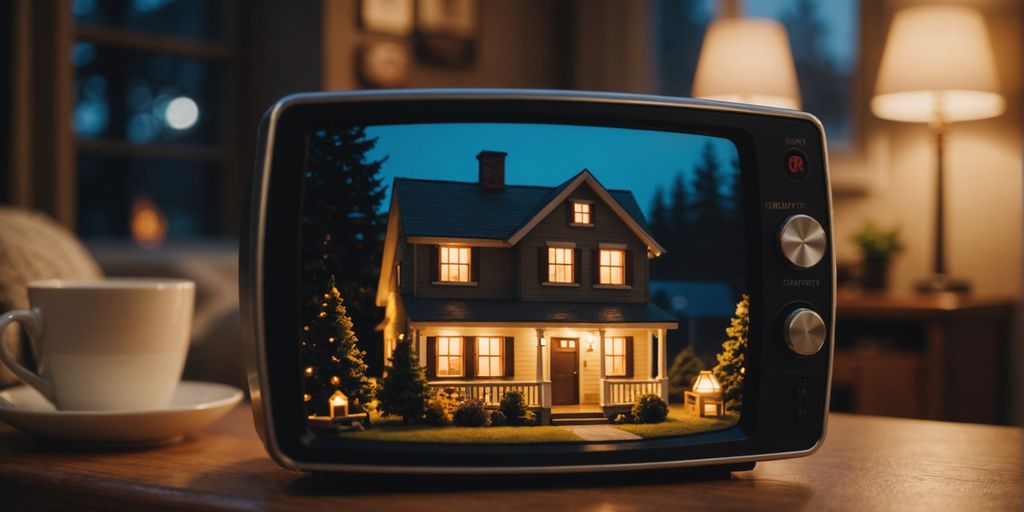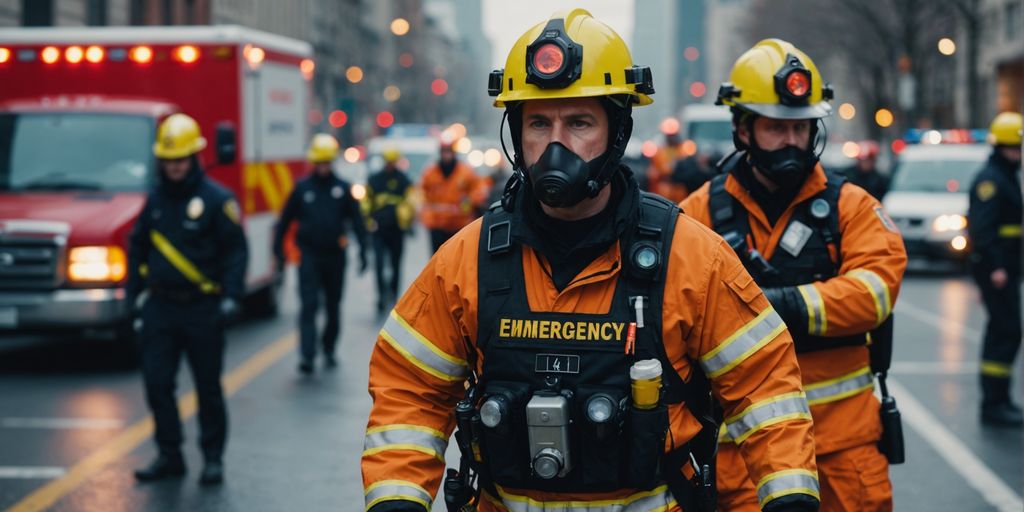Your home should be a safe place for you and your family. However, there are many hidden dangers in each room that can cause accidents or injuries. This home safety checklist will help you spot these dangers and fix them, making your home safer for everyone.
Key Takeaways
- Regularly inspect your home to identify and fix potential hazards.
- Use proper storage for flammable items and hazardous materials.
- Install smoke and carbon monoxide detectors in key areas.
- Childproof areas that are accessible to young children.
- Ensure proper lighting and clutter-free walkways to prevent falls.
Kitchen Safety Tips
The kitchen is often considered the heart of the home, but it can also be a place full of potential hazards. Following some basic safety tips can help keep your kitchen a safe space for everyone.
Proper Storage of Flammable Items
Store flammable items like oils, paper towels, and cleaning supplies away from the stove and other heat sources. Never store them above the stove, as they can catch fire easily. Make sure to keep a fire extinguisher nearby and know how to use it.
Safe Cooking Practices
When cooking, always stay in the kitchen to monitor your food. If you need to leave, turn off the stove. Use the back burners when possible and turn pot handles inward to prevent accidental spills. Never throw water on a grease fire; instead, cover it with a lid to smother the flames.
Childproofing the Kitchen
To keep children safe, use safety latches on cabinets and drawers that contain sharp objects or hazardous materials. Install stove knob covers and keep small appliances out of reach. Teach kids the importance of kitchen safety, such as not touching hot surfaces and handling sharp objects with care.
Bathroom Safety Measures
The bathroom is one of the most dangerous places in the house, especially for seniors. Preventing slips and falls is crucial. Install grab bars near the toilet and in the shower or tub area. Use nonslip mats both inside and outside the bathing area. Consider replacing low toilets with higher ones to make it easier to get on and off.
When it comes to the safe use of electrical appliances, always unplug hair dryers, curling irons, and electric razors when they’re not in use. Keep them away from the sink to avoid any risk of electrocution. Proper ventilation is also important to reduce the chances of mold and mildew forming on your walls or ceiling.
Proper medication storage is another key aspect. Store your medicines in a cool, dry place, preferably a medicine cabinet, where children and pets can’t access them. This simple step can prevent accidental ingestion and keep everyone in the household safe.
Living Room Safety
The living room is a place where families gather, but it can also be a source of potential hazards. Here are some tips to keep this space safe for everyone.
Securing Heavy Furniture
Ensure that all heavy furniture, such as bookshelves and TV stands, are securely anchored to the walls. This prevents them from tipping over, especially in homes with small children or during an earthquake. Use brackets or straps to keep these items stable.
Fireplace Safety
If you have a fireplace, make sure it is properly maintained. Have it inspected and cleaned regularly to prevent chimney fires. Always use a screen to keep sparks from escaping and never leave a fire unattended. Store firewood and other flammable materials at a safe distance from the fireplace.
Electrical Cord Management
Electrical cords can be a tripping hazard and a fire risk. Keep them organized and out of high-traffic areas. Avoid running cords under rugs or carpets, as this can cause them to overheat. Check cords regularly for signs of wear and replace any that are damaged.
Bedroom Safety Guidelines
Ensuring safety in the bedroom is crucial for everyone, especially for older adults. Here are some essential tips to keep your bedroom safe and secure.
Basement Safety Precautions
The basement is often home to many of your house’s essential systems, so it’s crucial to keep it safe and well-maintained. Safety should be a top priority when dealing with this area of your home.
Hallway and Staircase Safety
Ensuring the safety of hallways and staircases is crucial for preventing accidents at home. Proper lighting is essential to avoid trips and falls, especially at night. Consider installing motion detection lights to illuminate the hallways and stairs automatically.
Proper Lighting
Handrail Installation
Handrails are vital for stability. Make sure to install handrails on both sides of staircases. Test the handrails to ensure they are not loose or unstable. This is especially important for older adults and children.
Clutter-Free Walkways
Keep hallways and staircases free from clutter. Remove any throw rugs or thresholds that could cause someone to trip. If you have electrical cords crossing the path, relocate them to reduce the risk of tripping.
Outdoor Safety Tips
Ensuring safety outdoors is just as important as indoor safety. Here are some tips to keep your outdoor spaces secure and hazard-free.
Securing Outdoor Furniture
Outdoor furniture can become dangerous if not properly secured, especially during storms. Make sure to anchor or store furniture when not in use to prevent it from being blown away. This can help avoid potential injuries and damage to property.
Pool Safety
Having a pool is a great way to enjoy the summer, but it comes with responsibilities. Always supervise children when they are near the pool. Install a four-sided fence with a self-closing, self-latching gate to keep unsupervised children out. Additionally, keep rescue equipment and a phone nearby in case of emergencies.
Safe Use of Outdoor Electrical Outlets
Outdoor electrical outlets should be used with caution. Ensure they are weatherproof and have ground fault circuit interrupters (GFCIs) installed. Avoid using electrical devices in wet conditions to prevent electrical shocks. Regularly inspect cords and outlets for any signs of wear or damage.
Garage Safety Checklist
Ensuring your garage is safe is crucial for preventing accidents and injuries. Go through the checklist below to see how safe your garage is, and what improvements can be made.
Home Security Enhancements
Installing Security Systems
A comprehensive home security system is the best way to monitor and respond to security breaches in real-time. These systems often include surveillance cameras, glass break detectors, and motion sensors. Modern security systems can also be integrated with home automation devices and accessed remotely using a laptop or smartphone.
Using Smart Locks
Smart locks offer a convenient and secure way to control access to your home. They can be operated using a smartphone app, which allows you to lock or unlock doors remotely. This feature is especially useful if you need to let someone in while you’re away. Additionally, smart locks can provide activity logs to track who enters and exits your home.
Outdoor Lighting for Security
Installing security lights can deter burglars and provide safe passage on walkways and in doorways. Lights with motion detection are particularly effective, as they can startle intruders and alert you to their presence. Smart lightbulbs are another great option, allowing you to control exterior lights from your smartphone for added safety.
Safety for Older Adults
Ensuring the safety of older adults at home is crucial for their well-being and independence. Keep your family and loved ones safe by following these essential tips.
Fire Safety Essentials
Installing Smoke Alarms
Smoke alarms are a must-have in every home. Make sure to install them on every level of your house, especially near sleeping areas. Test them monthly and replace the batteries at least once a year. A working smoke detector can save lives by giving you an early warning in case of a fire.
Creating an Evacuation Plan
Having a fire escape plan is essential. Sit down with your family and map out at least two ways to exit each room. Practice your fire drills regularly so everyone knows what to do in an emergency. Remember, a well-practiced fire safety plan can make all the difference.
Using Fire Extinguishers
Keep fire extinguishers on every floor and in key areas like the kitchen. Make sure everyone in the house knows how to use them. Fire extinguishers are crucial for putting out small fires before they get out of control. Fire safety can include having a fire extinguisher and a working smoke detector, but a fire safety plan and smart fire safety practices are essential.
General Home Maintenance
Regular home maintenance is crucial to keep your home safe and running smoothly. Neglecting general maintenance for years can impact the home value and lead to costly repairs. Here are some essential tasks to include in your home maintenance routine.
Conclusion
Ensuring your home is safe doesn’t have to be overwhelming. By following a simple checklist and making regular inspections, you can catch small issues before they become big problems. Remember, every room in your house has potential hazards, but with a bit of effort, you can address them and create a safer environment for you and your family. Keep this guide handy and refer to it often to maintain a secure and comfortable home.


